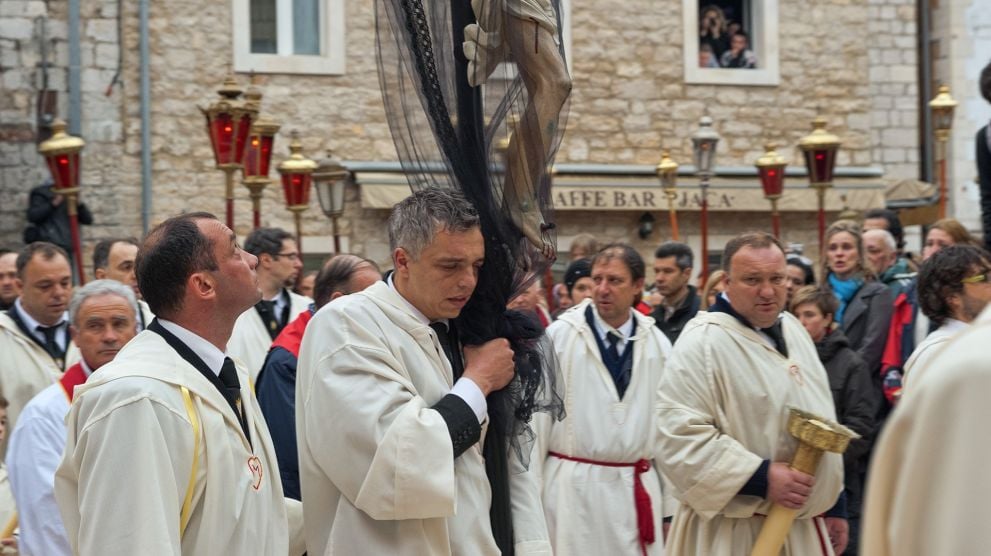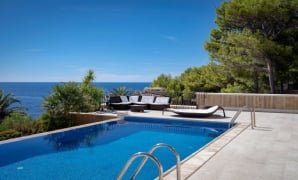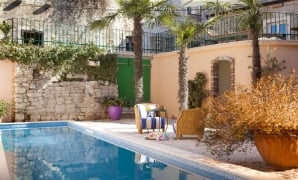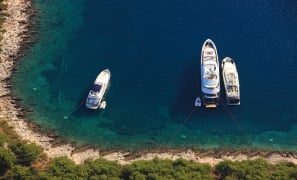Showcasing Unique Religious Traditions
Easter on Hvar is one of the most magical times to visit Croatia’s premier island, a time of family joy, religious celebration and emergence from winter hibernation. Extended families from Zagreb and beyond return to Hvar to rejoice in this important family and religious time of the year – it is a wonderful time to be a foreign fly on the wall to see locals relaxing in their natural habitat.
It is also a time of tradition, upholding the same routines as their ancestors in the run up to Easter. Nowhere is this more true than in the various processions which take place during Holy Week, a combination of unique religious processions, which have even achieved the status of intangible UNESCO heritage. And while the most famous of these, Za Krizen, is internationally famous, there are several other religious processions during Holy Week, which are fascinating to observe and participate in. It should be noted that these processions are not tourism events but deeply religious experiences, which date back more than 500 years.
The biggest process is called Za Krizen, or "Behind the Cross", an annual procession starting at 22:00 on Maundy Thursday, with six simultaneous processions led by barefoot crossbearers leaving from Jelsa, Pitve, Vrisnik, Svirce, Vrbanj and Vrboska. The crossbearer, carrying the traditional cross of the village (weighing 10-18 kg), is followed by his acolytes with their torches and hundreds of pilgrims. Chanting through the night and stopping at churches in the other five villages through the night over a distance of 22km, they eventually return to their starting point around 07:00 on Good Friday, running the last few metres before returning the cross to the awaiting priest.
It is interesting to note that the Za Krizen procession has taken place every year for more than 500 years, including during World War II in a refugee camp in the Sinai Desert, after thousands of Dalmatian civilians were evacuated to El Shatt in 1944.
If you can’t make the Za Krizen procession, there are plenty of other options, each procession offering its own individual style and tradition. Hvar Town’s procession takes place on Good Friday at 15:00 and is called ‘By God’s Tombs’. Starting at St. Stephen’s Cathedral on the main square, it visits five churches in the town, with the crossbearer masked until the end of the procession, so that nobody knows his identity. A second, shorter procession takes place after mass in the cathedral on Good Friday at 20:30.
For early risers and the truly fit, the procession in Sveta Nedjelja begins at 04:00 on Good Friday, ascending to the monastery in the cave high above the village, before continuing to the abandoned village of Jagodna and back to Sveta Nedjelja by 07:00.
There will be early risers on Good Friday in Dol too, with the 10km procession to Stari Grad and back beginning at 04:00, while Stari Grad holds its own procession at 20:00 on Good Friday, proceeding through the town until 22:00.
Eastern Hvar is a fascinating place to be in Holy Week, with a range of processions to add a little colour and tradition, not least in Sucuraj, where masked crossbearer carries a hollow wooden cross, which can be filled with sand or stones to make it heavier. The Sucuraj procession takes an hour and begins at 20:00 on Good Friday.
The processions in Poljica and Zastrazisce bring the cross into the sea at Vela Stiniva. Zastrazisce’s procession comes in two parts, the first visiting 5 churches on Maundy Thursday, followed by the main procession from 06:00 on Good Friday, while Poljica’s procession also starts at 06:00, walking through an old forest pathway to Zastrazisce and back. For later risers in the east, Bogomolje’s procession through the forest to Gdinj and back starts at 08:00, with Gdinj’s procession in the opposite direction starting at midday.
*Author - Paul Bradbury
*Photo Credit - Rafael Janic Photography




